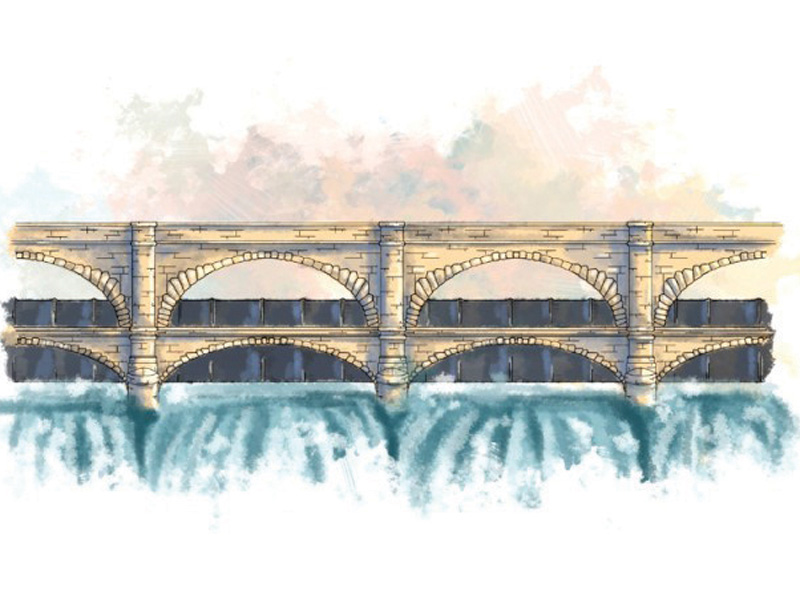
Pakistan maintains that constructing the barrage is in violation of the Indus Water Treaty (IWT). “India has the Wullar Lake and does not need additional water storage,” an official said.
Under the treaty, Pakistan is entitled to water from the three western rivers: Indus, Jhelum and Chenab. Pakistan maintains that the construction of the Wullar Barrage will convert the natural lake into a man-made storage with a capacity of 0.324 million acre feet, which adversely affect the flow of water into the country.
India, on the other hand, maintains that certain amendments in the design and structure of the barrage can address Pakistan’s reservations. In the earlier rounds of talks, India has said it has the right to build the barrage under the IWT and that the navigation project will only be used to transport water and not as a storage facility.
Published in The Express Tribune, April 16th, 2013.
Like Business on Facebook to stay informed and join in the conversation.
COMMENTS (21)
Comments are moderated and generally will be posted if they are on-topic and not abusive.
For more information, please see our Comments FAQ






















1714029027-0/Tribune-Collage-Feature-Images-(11)1714029027-0-270x192.webp)
1714027629-0/Ranbirtransformation-(1)1714027629-0-270x192.webp)




















My question to all concerned is that how much of water does manage to flow out into the sea after all and why can we not build massive number of above and below ground water storages to contain that flow?
@Pakistani,
Siachen was existing much before Pakistan was born. It was/is and will be integral part of India. East pakistan name was erased from map by mukti Bahini to create Bangladesh
@Gp65: It is not about IWT now - that's just the smoke created to bring India to the negotiation table. There's little in the treaty that can prevent India from building such structures on Western Rivers as long as the minimum water discharge to Pakistan is maintained. Now Pakistan side is expecting India to walk the extra mile over and above IWT, which in my view India could have (Bangladesh has even been offered a Joint partnership in Tipaimukh & other Indian dams for instance), had Pakistan not been so hostile to India's interests in the broader region.
@Naveen: I share your goal for peace but disagree about how we can get there. Gujral doctrine of unilateral concessions by India which Vajpayee also initially adopted, did not give India the peace dividend that he had hoped for and led to Kargill. A tougher stance by Vajpayee after December 2001 parliament attack, actually led to Musharraf considering out of box solutions. now MMS is going back to Gujral ways and results are there for all to see.
In any case there is no need for new treaty. IWT exists and India has always honoured it. please read the links I have attached in my earlier post. Also google and read an article by Khaled Ahmed on Jamaat Ali Shah to get a history.
By humoring false accusations by Pakistan which eventually are disproved in international courts and delaying national interest projects by years, Indian politicians are not serving Indian citizens well. We want peace with Pakistan not abject surrender.
India did one smart thing and one incredibly dumb thing.
Smart thing: Negotiate the IWT in its favour. By wording it in such a way that India can use the water to develop electricity. Not only that India has veto power over what infrastructure Pakistan builds on those waters as well. But, the latter power has not come into play as Pakistan never has been serious to build dams and ensure water safety of its citizens.
Dumb thing: India agreed to keep 3 smaller rivers and gave the larger ones to Pakistan. That is why till date Pakistan has never asked for a renegotiation as it would make India's case of 50-50 share strong, thereby actually reducing the water flow into Pakistan.
Pakistan cannot do much. It has no case, never has had. In the past 50 or so years, India has built many many dams, not once has the Neutral expert ruled against it. Pakistan has raised objections for the sake of raising. If Pakistan had spent the same effort in building water storage everyone's problem would have been solved.
@Pakistani: for east pakistan we helped pakistanis only bt they love to call themselves as bangladeshi so what can we do
Everything can be worked out. As far as practical, and in line with Gujral Doctrine, India behaves very generously to all of its smaller neighbor without any demands for quid pro quo (though the local elites do whip up Anti-India passions to hide their own failures) except with Pakistan which has carved a 'special' niche for itself in the hearts of most Indians.
Shoving the China Card down our throats, every now and then, does not help Pakistan's case (just as it didn't in 1971). It only creates more enmity. As for China herself, it knows very well that if it tries to raise temperatures too high in India's neighborhood, then India can do the same in China's neighborhood (US is anyway waiting for India to join as a full fledged NATO ally to encircle China).
Fanatics do no good to Pakistan's cause either as they only weaken Pakistan's International status, enrage the ordinary Indians (thus making any goodwill gestures with Pakistan politically costly) and destroy Pakistani society itself.
Bottomline- It is high time Pakistan starts mending its ties with India for the good of its country and people.
ET mods : Everything I am saying is factually true. You allow factually incorrect posts from so many people but filter me out just because of my nickname...your bias shows. This is the 3 rd time I am trying to post on this link. @santosh govindaraju: Actually you are factually incorrect. India has negotiated Indus Water Treaty with Pakistan 50 years back and honored it even during wars.
Repeatedly false claims are made that India is stealing water but when it goes to independent arbitration as provided in the IWT, India's stand is vindicated. http://www.indianexpress.com/news/india-wins-kishanganga-case-at-the-hague-court/1076239 http://articles.economictimes.indiatimes.com/2007-12-27/news/284154761baglihar-project-indus-water-treaty-pakistan
In this case India just plans to use it for transportation nt water storage so the whole premise that India does not need incremental storage so it should not
@Pakistani: ya plz bring him....lets settle Pakistan....
Pakistan will lose again at IWT independent tribunal. But it will have met Pakistan's objective to delay and obstruct to the best of its ability any Indian development project.
If there is any issue the same may be resolved by holding bilateral talks why go to court after all we are neighbours and we need each other.
Support terrorists. Send them to Mumbai and massacre innocents. Invade Kargil. And you expect Indians to sit down and negotiate a water treaty with you.
As I wrote before, no where till date, it has been proven that India has done anything outside IWT or has violated it. Again and again, we have gone to international court, only to look like fools, when neutral experts holds India's position high. Where are the facts? Why can Pak Govt put on website the flow of water every month from our sensors, along with historical flow? Our useless experts only knows how to waste public money and raise foolish slogans, without any factual basis. No doubt, no one listens to us..
@PK Very well said. Rather than just pointing fingers at each other this is the only way out.
All previous accusations that India was violating IWT were proved false. This one will not go any other way. Instead of initiating unjustified legal case, why does it not resolve the issue between Punjab, Sindh and KPK and build Kalabagh dam?
The name is the Tulbul Navigation Project. You can't name it as you like. Anyway It has been delayed for almost 2 decades. Talks are going nowhere. Better move the issue to International arbitration.